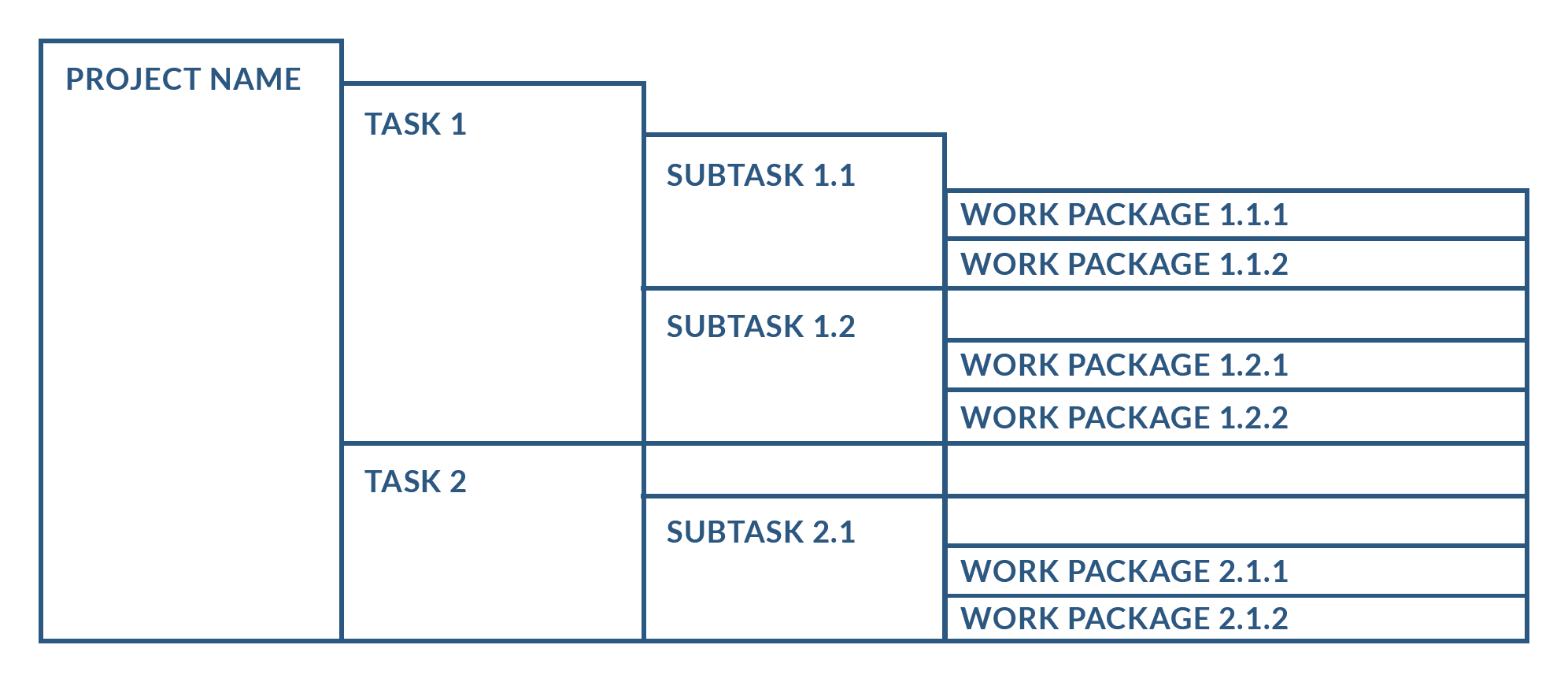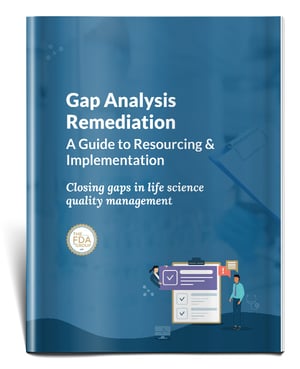Resource and capacity planning is one of the most critical and overlooked steps in the lead-up to a quality system project.
Whether it's closing gaps following a gap analysis, remediating compliance issues after an inspection, or kicking off any other type of improvement project, ensuring you have the human resources you need to be successful from the outset is incredibly important for setting a project up for success from the start.
Yet, many firms, in the interest of saving time and getting projects underway as quickly as possible, continue to rely on ad-hoc resource allocation and a naively hopeful attitude about who is qualified and capable of bringing the plan to life.
In this guide, we've diagnosed the problem and provided a prescription: a step-by-step strategy for understanding what resources your project demands and planning accordingly.
Before we jump in, a little background, first.
The Problem of Poor Resource Planning
The lack of effective resource planning isn't unique to the life sciences. A 2017 survey by the Project Management Institute found that only 62% of organizations surveyed admitted that they “always” or “often” use resource management to estimate and allocate their resources.
What’s more, the very same study showed that insufficient resource allocation is exactly what throws projects into peril. When asked about the primary causes of their past projects’ failures, 23% of respondents cited “inadequate resource forecasting” and “resource dependency.” This is particularly frustrating knowing that despite not being the top problem in project management, it’s one factor that can be tightly controlled from the start.
The reason why resource allocation is so critical and deserving of a team's time and energy is simple: Without a realistic view of who makes up your workforce, how much time they have to spend on project tasks, and what they need to get the job done, a project simply isn't set up for success to the extent it could and should be.
With so much riding on resourcing, and given the challenges we’ve seen firsthand throughout the industry, we’ve developed an adaptable strategy for resource planning. In our example, we've laid out a remediation project for closing gaps after a gap analysis, however other types of projects can certainly be planned using variations of these steps.
An 8-Step Resource Planning Strategy & Checklist
One more note before we jump in: While the word “resources” generally implies all of the things that a project manager or organization depends on to deliver products and services, we’re using it in this context to refer to human resources, in particular. In truth, planning people is different from planning other physical resources, so such a distinction is important.
Determining the people needed to carry your plan through to completion can pose a whole new set of challenges, so doing it right matters. Over-resourcing wastes time and money. Under-resourcing risks missing critical milestones. The wrong resources won’t meet your expectations. Project managers need to understand what resources a project needs and what resources the project already has at its disposal before putting hard dates to any part of the plan.
Alright, let's dive in:
1. Determine how accurate your estimate needs to be
Typically, the more accurate the estimate, the more detail is needed, and the more time that is needed. If you are asked for a rough order of magnitude (ROM) estimate (-25% - +75%), you may be able to complete the work quickly, at a high-level, and with a minimum amount of detail. On the other hand, if you must provide an accurate estimate within 10%, you might need to spend quite a bit more time and understand the work at a lower level of detail.
2. Create an initial estimate of man-hours for each activity and for the entire project
There are many techniques you can use to estimate the effort required, but for this type of project, a task decomposition (or work breakdown structure) is likely ideal. This should break down the remediation plan to describe the project in terms of what needs to be done and delivered at each step, making the needs plainly visible and easier to manage while giving you a tool to know what specific skills and capacity will be needed when and where.
A Sample Template of a Work Breakdown Structure:

3. Estimate the duration of project tasks
Using past experience, the knowledge of an experienced team member, one of many available project management techniques, or guidance from an external expert, estimate the time required to complete each activity. The Critical Path Method (CPM) is perfect for this as it illustrates the project structure and includes dependencies for each task along with milestones and durations. Using CPM as a tool, you can calculate the total estimated time for the project with generally reliable accuracy.
4. Identify qualified internal resources and gauge their availability
Once the scope is determined, designate members of your internal project team and how their skills and capabilities correspond with the tasks they will be assigned to. Make sure that these individuals are available for the estimated period for each task and that any risks are mitigated through a resourcing contingency plan. If possible, use historical data from past projects to inform your estimates. This can serve as a baseline for setting up a new project, thereby reducing “guesstimates."
5. Add project management time
This is the effort required to successfully and proactively manage a project. In general, add 15% of the man-hours for project management.6. Determine which project roles or capacity needs should be filled externally
Note any and all areas where internal resources are either unqualified or otherwise unavailable due to capacity needs. These are the areas where your staff will likely need to be augmented with the appropriate external resource(s) to fill the resourcing gap. In each area of need, consider the following questions to better understand what skills and experience are required in an external resource:
- Which specific operations will they need to support?
- Which skills, capabilities, or experience are essential to ensuring those operations can be adequately supported?
- What specific requirements exist for the process, equipment, or project in question?
- What specific qualities, capabilities, or experience must a specialist have to satisfy these requirements? (For example, is previous sterile room experience critical?)
- What is the expectation for specialists in terms of protocol drafting and execution?
- What is the training or onboarding process required prior to gaining access to the internal documentation control system?
- Will the specialists be required to initiate and drive change controls?
- Which specifications are relevant to the project or program?
- What specific qualities, capabilities, or experience must a specialist have to perform a thorough review?
- Which training and onboarding activities will be needed for this specialist before they can begin work?
- Have you accounted for training and onboarding in your budget?
- Are project timelines realistic given the amount of time needed for training and onboarding?
“Before reaching out for external resourcing support, organizations should have a clear picture of the skillsets they need. That way, they can get the right resources. If you just start bringing people on, it can look like a free-for-all, and you lose so much time and money.”
Alan Greathouse, The FDA Group
7. Calculate the total effort by adding up work packages and adjust as needed
Sometimes, when adding up all the components, the estimate may seem obviously high or low. If your estimate doesn't look right, go back and make adjustments to your estimating assumptions to better reflect how a project will likely pan out. If your sponsor thinks the estimate is too high, and you don't feel comfortable to defend it, you have more work to do on the estimate. Make sure it seems reasonable to you and that you are prepared to defend it!
8. Put it all together in a resource management plan
Once you’ve identified what you have versus what you’ll need to implement the project, organize your findings into a resource management plan that makes this information useful for project leaders. In addition to being a management resource, this plan can help earn stakeholder buy-in and get project budgets approved as well. While a physical resource management plan advises on the use of materials and equipment, human resource plans should specify the type of skilled people needed to complete a project, and the quantity, estimated cost, and scheduled duration of their given activities. Before implementing your project plan, modify and organize it to assign every individual project task to the appropriate person.
An effective resource plan should include the following information:
- Resource Identification: The type of people needed, and once identified, their name, title, source (if contracted), and the assigned project team.
- Resource Requirements: The relevant information about the resources available, including when they’re available, any conditions to that availability, and the duration of their availability.
- Roles and Responsibilities: The specific function(s) that the resources will perform for the project. This information might list the resource authority, including decision-making and approval authority.
- Resource Cost: The direct or estimated resource cost (if contracted).
- Resource Quantity: The amount of this type of resource (for example the number of labor hours).
- Resource States: The current state of the resource (planned, requested, approved, denied, allocated, confirmed).
- Resource Locations: Where is the resource located, including virtual resources and co-located teams.
- Resource Organization: A display of the project team and their relationship to other project team resources.
- Resource Calendar: The scheduled working days, shift hours, start and end dates for different project milestones, and scheduled holidays. (This should identify the duration of work for specific resources.)
- Resource Issue Log: The information on resource planning challenges, for example in acquiring skilled resources, and problem-solving steps that worked to keep project resource plans on track.
Dive deeper or get expert assistance closing quality system gaps
Grab our free white paper to learn how to transform a quality assessment into a practical project plan. Inside, you’ll find this strategy along with tips for implementing your plan efficiently from start to finish, quality system gaps to be especially aware of, and much more.
Need help assessing your quality system, planning remediation, or resourcing a project? The FDA Group’s large network of quality and compliance resources have extensive knowledge and experience in relevant regulations, guidance, and best practices related to quality system management throughout the regulated life science industries.
Whether you're looking to place direct hires or work with contracted professionals, our resources can be utilized to meet the wide range of quality and compliance requirements throughout the life sciences, as well as to support staffing assignments, lead and manage related activities, bridge staffing gaps, and provide long-term or interim leadership.
Contact us to learn more about fulfilling specific quality and compliance resourcing needs. We help life science organizations secure a wide variety of specialists with the perfect combination of qualifications, experience, and motivation for succeeding in challenging and demanding projects—all at a competitive rate and backed by a Total Quality Guarantee.
Gap Analysis Remediation: A Guide to Resourcing & Implementation


